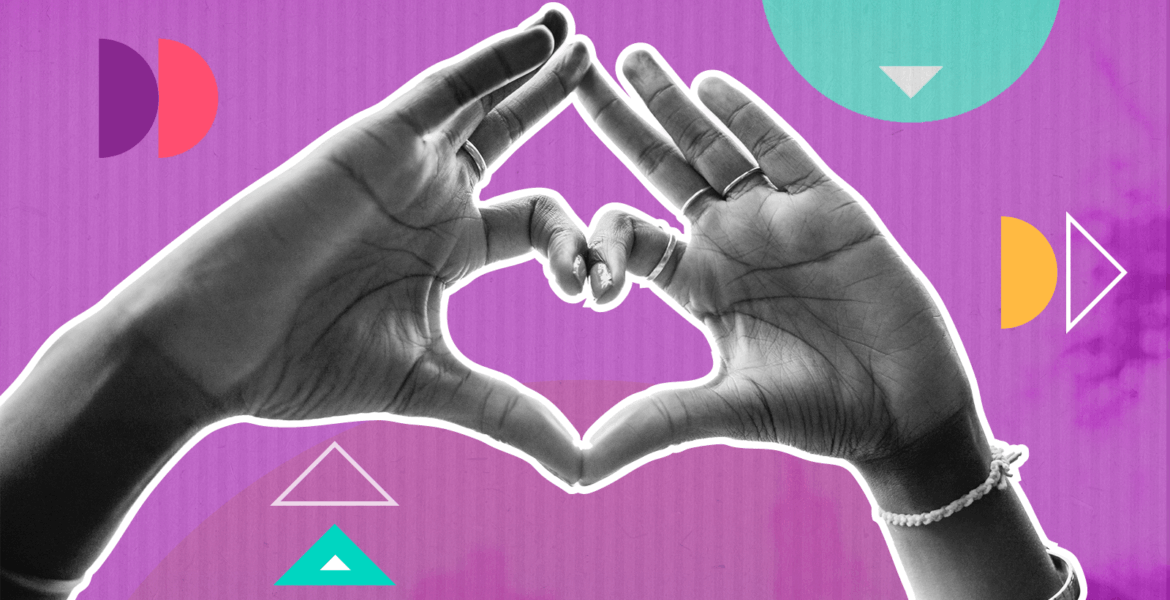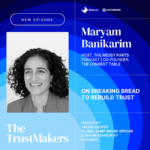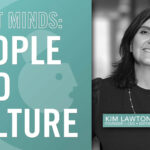Bias is implicit within our complexly integrated socio-cultural structures. From gender divisions to the enduring legacy of racial segregation, fears surrounding sexuality to generational assumptions. Bias is also tacit within our individual expressions, our likes and dislikes, what we have learned consciously and subconsciously. Group think amplifies our views; social media distorts and compounds our opinions, and data can provide a disingenuous layer of credibility.
But as marketers, our role is to authentically represent the lives of the people we seek to engage with. We are mediators, unifiers and bridge-builders. At its best, marketing doesn’t just mirror culture; it champions progress. Consider the impact of campaigns like Unilever’s The Will, Dove’s Real Beauty, Always’ Like a Girl and Gillette’s First Shave in shaping cultural narratives. Look at the efforts of brands like P&G, Vodafone and Nike with initiatives like The Choice, Change the Face and Don’t Do It.
Yet, data shows that progress in advertising has stalled, and the urgency for meaningful acceleration toward equality is palpable. Our influence extends beyond the confines of marketing. We are most effective when we acknowledge the public’s desire to be seen, heard and served.
In today’s landscape, this requires purpose-driven communication, infused with empathy and authenticity. People expect brands to take a clear and unequivocal stance. This approach must be twofold: not only in external marketing and communications but also in internal organizational structure and culture. The most powerful way to advocate for Diversity, Equity, Inclusion and Belonging (DEIB) is to embody it.
For organizations aiming to lead rather than follow, and to disrupt rather than be disrupted, cultivating a workforce rich in diverse skills, perspectives and inclusive mindsets will unlock transformation, growth and industry leadership.
Fostering DEIB Across All Levels of Your Brand: Two Essential Components
Looking Inward
To genuinely embrace DEIB, organizations must go beyond surface-level statements and implement a comprehensive strategy that normalizes intersectional identities and actively dismantles harmful stereotypes. Creativity and inspiration stem from individuals, their experiences and the opportunities their environment and company cultures afford them. Without meaningful input and representation from all communities, claims of championing diversity ring hollow.
- Define your organization’s core purpose and values, and ensure they are reflected in every decision you make. Instead of trying to address every issue, concentrate on what aligns with your brand’s mission.
- Elevate DEIB from a niche concern within the HR department to a strategic priority with direct oversight from the CEO. By fostering collective responsibility, you can advance your organization’s goals through revising Equal Opportunity policies, advocating for employee rights, offering communication trainings or supporting Employee Resource Groups (ERGs) that celebrate diversity.
- Ensure your workplace adheres to accessibility laws. Consider implementing Universal Design principles to create an environment that is inclusive for all.
- Adopt a zero-tolerance policy for sexual, physical or verbal harassment for psychological and physical safety.
- Review your health insurance benefits and tailor them to meet the diverse needs of all employees.
- When hiring, shift your focus from finding a “culture fit” to a “culture add,” recognizing diversity as a valuable asset. Adopt progressive recruitment practices to broaden your candidate pool. Utilize tools like PitchMe.co, which anonymizes candidate profiles, and Textio, which reviews job descriptions for biased language, to cultivate an inclusive talent pipeline and develop internal champions of diversity.
- Be mindful of language: use terms like “hey folks” instead of “hey guys”, “parental leave” instead of “maternity leave”, and “inclusion/exclusion lists” instead of “whitelist/blacklist.” Ask for and respect people’s pronouns, including them in communication platforms, social media and email signatures. Change the narrative by avoiding words like “loud”, “aggressive”, or “bossy.” Words matter and can either challenge or reinforce biases.
- Actively seek to understand the daily challenges your employees face. Don’t wait for underrepresented groups to speak up; instead, proactively solicit their feedback. Ask if they feel safe in contributing and taking risks at work, whether their voices are heard and the barriers they face. Ask yourself if you are truly recruiting, mentoring, retaining, promoting and championing the development of diverse talent.
- Challenge the status quo and diversify your thinking not only in what you ask but also in how you listen. Reflect deeply on what your employees tell you, demonstrating genuine interest in their answers. Consider that some may be single parents, devoutly religious, have an accent or cultural background they’re concerned about, have an invisible disability or are gender non-conforming. Their concerns about being excluded and overlooked are valid and should be addressed.
- Educate yourself on the experiences of underrepresented groups to engage meaningfully in these conversations. Resources like the SPACE2 Model of Inclusion offer evidence-based techniques for managing bias. Deepen your understanding of race with books such as Michelle Alexander’s The New Jim Crow, Robin DiAngelo’s White Fragility, Layla F. Saad’s Me and White Supremacy, and Ibram X. Kendi’s How to Be an Antiracist. For insights into women’s experiences from an intersectional lens, read Mikki Kendall’s Hood Feminism, Jodi Patterson’s The Bold World, and Minda Harts’ The Memo: What Women of Color Need to Know to Secure a Seat at the Table. For leadership guidance, consider Stacey Abrams’ Our Time Is Now and Mahzarin Banaji’s Blindspot: Hidden Biases of Good People. Creating inclusive workplaces requires ongoing effort and open dialogue, but these actions can help you demonstrate meaningful allyship.
As a leader, don’t let fear stifle your desire to learn. Nobody is perfectly “woke.” Embrace a leadership style grounded in honesty and humility; one that acknowledges your own gaps in understanding and cultivates space for genuine progress. This approach moves away from cancel culture and instead emphasizes active listening, asking tough questions and openly reflecting on our shortcomings. By committing to this process of continuous learning and unlearning, you can drive meaningful change within yourself and your organization.
Art Imitates Life
As marketers, budget-holders and decision-makers, we have a unique opportunity to drive systemic change. There are numerous ways to rise to the challenge. Our brands have the potential to stand firmly for what is right, mirroring the diversity of our customer base. Those who are committed to authentically representing the full spectrum of our society will reap the greatest rewards.
While advertising has the power to inspire and entertain, it also has the potential to perpetuate division. Media portrayals shape public perception. Positive representation can be empowering, while negative portrayals can marginalize and alienate. For instance, 66% of women have disengaged from content that negatively stereotypes them and many ethnic minorities feel underrepresented in advertising. Diversity is not only a driver of innovation and creativity but also beneficial for the bottom line. To bridge the gap between our current practices and where we aspire to be, it is crucial to integrate DEIB into every stage of ad development, ensuring that it aligns with our brand’s core values.
- Challenge your assumptions about DEIB. Don’t assume that groups with a similar education or skin tone share the same perspective, and can be reached and represented in the same way. Success lies in understanding the intersectionality within these groups, and that each person comes with their own unique experiences and preferences. When creating socially relevant content, focus on authenticity rather than seeking impressions and press coverage with box-ticking exercises to appeal to underrepresented groups. Understanding the dangers of tokenistic marketing can spark a shift in advertising practices.
- Collaborate with agencies that have a personal stake in the communities you are marketing to. Speak with your wallet by moving your budgets and business to Certified Diverse Suppliers in Marketing/Advertising and pull back from partners that do not show progress on that front.
- Course-correct the entire creative ecosystem by implementing a rigorous framework of inclusivity, from staff selection and briefings to artistic direction, casting and post-production. Assess factors such as race, ethnicity, age, ability, religion, sexual orientation and gender identity through an intersectional perspective to ensure thorough and inclusive representation.
- Remember, who is behind the camera is as important as who is in front of it. Storytelling from a perspective that aligns with your target audience will resonate more authentically. Foster a culture that’s not afraid to place underrepresented creators in the director’s chair.
- Consult a sensitivity reader to ensure your ad accurately reflects societal diversity. Assess whether your characters are presented as genuine, relatable individuals and if your ad is inclusive overall. Representation issues are deeply influenced by a community’s unique culture and initiatives should be tailored to local demographics as racial discourse varies significantly across different countries. Companies must be mindful of historical and cultural contexts when representing ethnic communities, avoiding the simplification of characters to surface-level traits. Consider accessibility features such as closed captions or sign language interpretation to support viewers with disabilities as well. Adding subtitles can enhance accessibility for those with hearing impairments and individuals who view social media content without sound. Make sure your website is compatible with text-to-speech tools and optimized for mobile devices, as larger fonts and user-friendly navigation improve accessibility for people with visual impairments.
- Reevaluate the true meaning of data-driven marketing. The ethics of big data are deeply connected to trust, and brand trust significantly affects market share. According to Ipsos Connect, trust in advertising has plummeted by 37%, largely due to ad saturation, counterfeit reality and data breaches. Compounding this issue, machine learning and generative AI are now presenting biased data sets as insights, which can influence our products, services, decisions and beliefs. The application of powerful computational tools with flawed data can have serious social consequences. Often, data we consider objective is far from it, as humans err. The biases present in AI are a reflection of our own flaws. While brand safety technologies play a crucial role in combating hate speech and misinformation, there is a concern that personalization might be creating digital echo chambers and limiting diverse viewpoints by filtering out content that doesn’t align with algorithmic predictions. Additionally, targeted advertising could unintentionally perpetuate prejudice by excluding underserved communities from job opportunities or by influencing political outcomes through microtargeting. To address these challenges, it’s essential to critically assess our reliance on fallible data when crafting creative briefs. Implement robust protocols by partnering with responsible platforms, producing ethical content and maintaining a sound infrastructure. Seek guidance from organizations such as ANA, the Coalition for Better Ads, the Conscious Advertising Network and the Unstereotype Alliance to adopt best practices around responsible marketing.
Meaningful brands forge emotional connections with people. To remain relevant, align your organization’s purpose with the evolving views, behaviors and expectations of today’s world. As Howard Zinn aptly put it, “You cannot remain neutral on a moving train.” Small shifts in perspective can significantly influence the direction of future societal designs.
Achieving true Diversity, Equity, Inclusion and Belonging remains a work in progress, but it’s one that brands are uniquely positioned to lead. As we strive to better people’s lives, it’s essential that our actions and policies consistently demonstrate a commitment to creating a more inclusive and equitable world.
About the Author
Tina Morwani is an award-winning marketer, advisory board member, mentor and DEI & mental health advocate. Check her out on LinkedIn.











